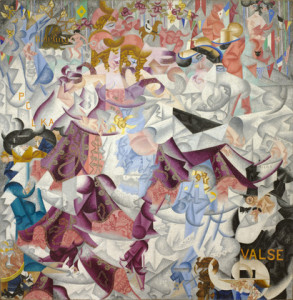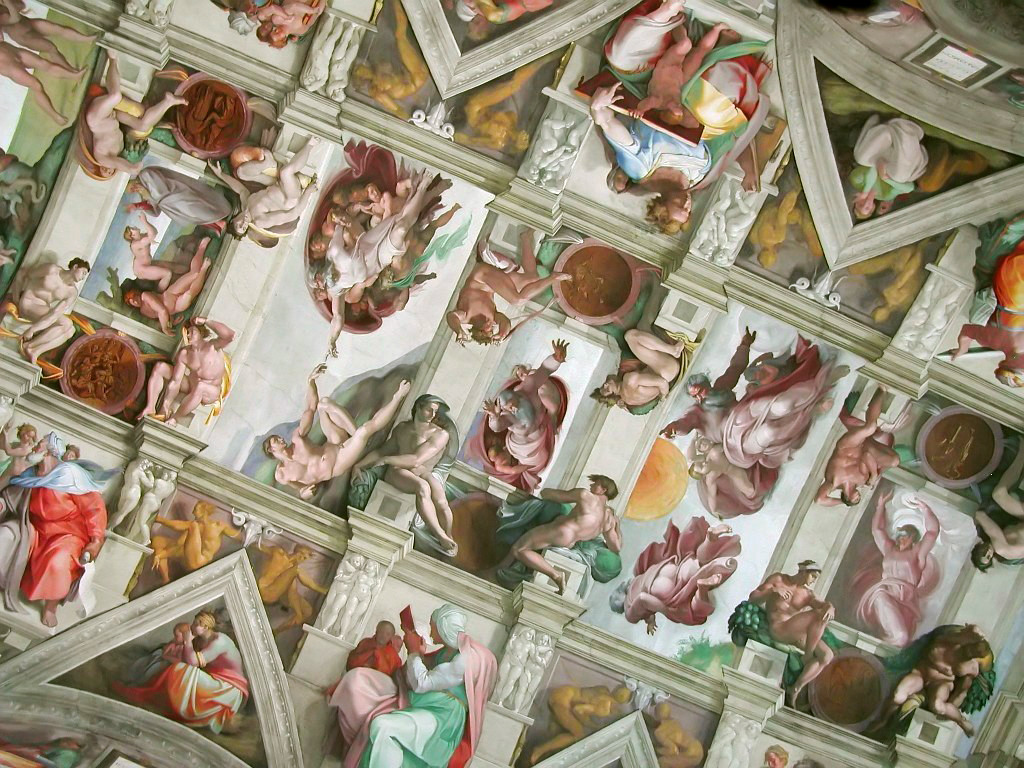In addition to the beauty of creation, the beauty of art, both religious and secular, has the capacity to lead souls into a deeper union with Christ. Similar to the beauty of the natural world, “artistic creation possesses its own capacity to evoke the ineffable aspects of the mystery of God.”[1]
[featured-image single_newwindow=”false”]
In particular, Christian art—that art which is inspired by the Gospels and lives of the Saints—“is, by nature, a ‘symbol’, a reality that refers beyond itself which leads along the path that reveals the meaning, origin and end of our terrestrial journey.”[2]
This type of art has great relevance and importance in catechesis in the modern world and has the capacity to ignite the hearts of all men and women, regardless of culture or religion. This love and appreciation of religious art has become an “object of a veritable infatuation for crowds of tourists, believers and non, agnostics and those indifferent to religion.”[3]
One need not look far to see evidence of this reality. As an example, millions of tourists flock to Saint Peter’s Basilica every year. A large portion of these tourists have no faith at all, coming from all corners of the globe to see the beauty and majesty of this religious edifice.
Many who see the beautiful art of the Roman churches are either strengthened in their faith or some experience the first seeds of faith. This holds true both for the stunning statues and paintings that a pilgrims sees, but also the transcendent music that is heard.
The beauty of art possesses a profound ability to pierce through the clouded intellect of modern man and reach the inner depths of his soul. However, not all art is created equal and most if not all “modern art” has the reverse effect of leading a soul away from God.
Modern Art – Divorced From Both Beauty and Truth

As we mentioned with the beauty of creation, beauty must never be divorced from truth. In reference to art in all its forms, modern art is divorced from both beauty and truth.
This comes from the principles of modern art. Beauty is no longer an external reality that transcends individuals, but instead is subjective and is solely based on the individual. There are no objective standards that govern the beauty of modern art; in fact, there are no standards at all. Everything from the past is thrown away.
When it comes to truth, modern art seeks to create its own truth “ex nihilo;” out of nothing. Modern art received its own genesis from movements such as the Enlightenment and French Revolution. These movements began in the 18th and 19th centuries and gained further traction in the early 20th century throughout Europe.
One example of this divorce from the past is the Manifesto of Italian artist Marinetti in 1909, whereby he described the goal of the Futurist movement of modern art. Marinetti taught that, “Art, in fact, can be nothing but violence, cruelty, and injustice.” He later said that all artists should “destroy the museums, the libraries, every type of academy.”
Another hallmark of modern art is the fascination with “novelty for the sake of novelty.” In a very real sense, what is “new” becomes an idol to be worshipped and supersedes any beauty or truth.
Art, divorced from beauty and truth, is not art at all.
Christian Art – “Bibles of the Poor”
On the other hand, Christian art that is rooted in beauty and truth is an excellent tool in a catechetical setting, whereby eternal truths can be taught by using the sacred images from the inexhaustible patrimony of the Church. For example, “Christian art offers the believer a theme for reflection and acts as an aid to enter into contemplation in intense prayer.”[4] These numerous works of art have often been referred to as “‘Bibles of the Poor’ or ‘Stairways of Jacob’” on account of their ability to “lead the soul up to the Author of all beauty and with Him to the mystery of God.”[5]
This type of art must be revived and used in catechesis and evangelization. For centuries art was used as a primary means of teaching both the young and the old. It transcends age, status and educational background. Art has a unique ability to teach as well as unite. Unfortunately these “Bibles of the Poor” have been lost and neglected, but thankfully there is a strong movement to restore them in Catholic churches around the world.
Anyone can access these “windows to Heaven,” and in our image-saturated culture it is important now more than ever to allow beautiful works of art, in the context of their relationship to truth, lead souls to God.
In our next article, we will look at the beauty of the liturgy.
Read the Entire Series
- How the Beauty of Creation Can Lead a Soul to God
- Why Does the Modern World Refuse to Listen to the Truth?
- Will the Beauty of Truth Alone Combat the Lies of Satan?
- Is Beauty a Temptation or a Path to God?
[1] The Via Pulchritudinis, §III.2
[2] Ibid.
[3] Ibid.
[4] Ibid.
[5] Ibid.

